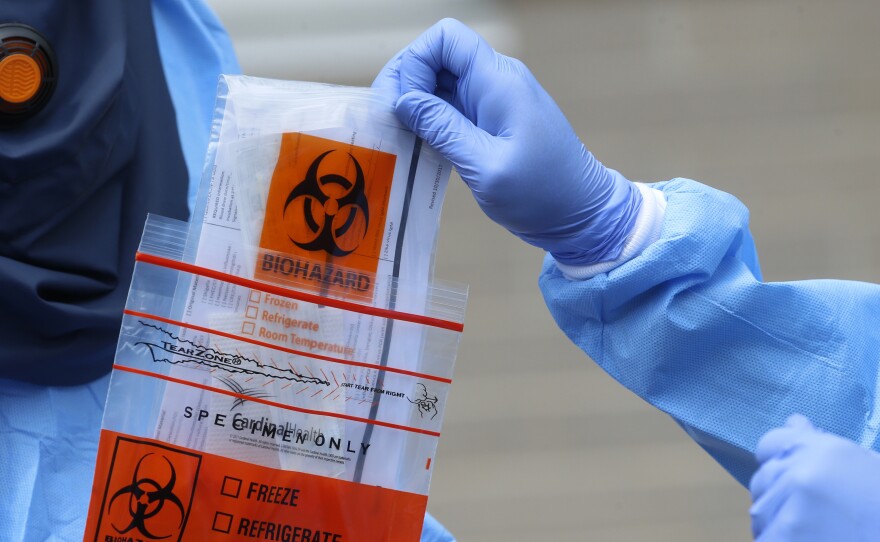A Centers for Disease Control and Prevention study published on Monday is the latest to confirm that the coronavirus disproportionately impacts communities of color in the U.S.
The study looked at COVID-19 cases associated with workplace outbreaks in certain industries in Utah between March and June. It found that Hispanic and nonwhite workers made up 73% of those cases — despite representing just 24% of the workforce in sectors where outbreaks occurred.
"Systemic social inequities have resulted in the overrepresentation of Hispanic and nonwhite workers in frontline occupations where exposure to SARS-CoV-2 ... might be higher," researchers wrote, adding that "extra vigilance" is needed to combat the spread of the coronavirus among the populations over-represented in these sectors.
Health officials defined workplace outbreaks as two or more lab-confirmed COVID-19 cases occurring within the same two-week period among coworkers in a shared space. Of the 277 outbreaks in Utah reported during these months, 76% were in workplaces.
Between March 5 and June 6, workplace outbreaks occurred in 15 industry sectors in Utah, from agriculture to educational services to transportation. A majority of those outbreaks — 58% — were in three sectors: manufacturing, wholesale trade and construction.
In those 15 sectors, people who identify as Latino or a race other than white comprise just under one quarter of the workforce. But they accounted for nearly three quarters of the COVID-19 cases associated with workplace outbreaks.
NPR and other news outlets have reported that Hispanics make up a greater share of confirmed coronavirus cases than their share of the population in much of the country.
That is the case in Utah, where health department data shows that they comprise 14.2% of the state's population and more than 37% of its COVID-19 cases.
Researchers involved in the study say racial and ethnic disparities in workplace outbreaks are likely driven by long-standing health and social inequities.
Those inequities manifest in several ways, according to researchers. For one, they result in the over-representation of Hispanic and nonwhite workers in front-line occupations that carry more risk of COVID-19 exposure.
Hispanic and nonwhite workers also have less flexible work schedules and fewer options to telework compared with white workers, researchers added.
That lack of flexibility, especially when combined with "unpaid or punitive" sick leave policies, can prevent workers from staying home when ill, which in turn can lead to more workplace exposures and worse health outcomes.
In fact, even before the pandemic hit, Hispanics were more likely to face health and safety risks at work.
According to Econofact, Hispanic low-wage workers are both less likely to be in consumer-facing sectors and less likely to benefit from Occupational Safety and Health Act regulations.
And a report from the National Urban League, released last week, noted that white people were nearly 50% more likely to be able to work from home as their Latino counterparts, and 35% more likely than Blacks.
So what should health officials armed with this new data do about it?
Researchers say knowing how workplace outbreaks are distributed across industries can help health departments target those where additional mitigation efforts are needed.
And they say such interventions should be tailored to the demographics of workers who are over-represented in those industries.
"Care must be taken to ensure that prevention and mitigation strategies are applied equitably and effectively using culturally and linguistically responsive materials, media, and messages to workers of racial and ethnic minority groups disproportionately affected by COVID-19," they wrote.
Copyright 2020 NPR. To see more, visit https://www.npr.org.






